This article was co-authored by Carrie Noriega, MD. Dr. Noriega is a Board Certified Obstetrician & Gynecologist and medical writer in Colorado. She specializes in women’s health, rheumatology, pulmonology, infectious disease, and gastroenterology. She received her MD from the Creighton School of Medicine in Omaha, Nebraska and completed her residency at the University of Missouri - Kansas City in 2005.
wikiHow marks an article as reader-approved once it receives enough positive feedback. In this case, 100% of readers who voted found the article helpful, earning it our reader-approved status.
This article has been viewed 251,635 times.
A physician usually recommends that a woman learns how to perform fetal kick counts in her third trimester of pregnancy, or sooner if she is experiencing a high-risk pregnancy. A fetal kick count is performed to keep track of the baby's movements within the womb. Keeping track of the baby's movements helps the mother discern between normal movements of the baby and movements that may signal cause for concern.
Steps
Identifying Fetal Kicks
-
1Know about "kick" counts. The fetal kick count is the count of any movements that the unborn baby makes such as jabs, punches, rolls, twists and turns. However, fetal kick counts do not include hiccups. If the fetal kick count is not normal, then this could be a sign of fetal distress.
- Keep in mind that even if the baby’s movements are decreased, you may still go on to have a healthy baby.
- Fetal kick counts can also help you learn your baby's sleeping and waking cycles, and it is an excellent way for you to bond with your baby before he/she is born.
-
2Know when to start. Doctors recommend that pregnant women should begin to start counting “kicks” during their third trimester, usually around 28 weeks. The baby usually becomes noticeably active between 18 and 25 weeks into the pregnancy.[1]
- If this is your first pregnancy, you will not notice the baby kicking until you are closer to 25 weeks.[2] The baby will be moving, but you will not feel it.
- For second or third time mothers, babies usually begin to start kicking around 18 weeks. [3]
- For high risk pregnancies, doctors recommend that the mother begins documenting fetal kick counts at 26 weeks.
Advertisement -
3Look for patterns. At first, it is difficult to distinguish gas and stomach discomfort from the fetal kicks. However, a healthy baby should soon establish a pattern of movements, becoming active during some parts of the day and resting during others. These patterns will soon become recognizable to the mother.[4]
- In the third trimester, the baby begins to demonstrate waking and sleeping cycles. When awake, the baby should kick frequently (at least 10 times in two hours). When sleeping, the baby will be still. You should be able to identify patterns of when the baby is asleep and awake from feeling the kicks.
-
4Be proactive. Once you have identified fetal kick patterns, monitor them closely. You should perform a fetal kick count once a day after 28 weeks of pregnancy as a way to monitor your baby’s health.[5]
- Remember to always track your kick counts in a journal or notebook. For more on this process, see part 2.
-
5Don’t panic. If your baby doesn’t kick the first time you perform a fetal kick count, then you may want to call your doctor to have a checkup and make sure everything is okay. While your baby will establish a pattern of movement in the womb, these patterns are not set in stone and are subject to changes on a day-to-day basis.[6]
- You can also try to coax some movement out of your baby by eating a meal or drinking something sugary, like a cup of juice.[7]
-
6Know when to seek help. If a discernible pattern does not begin between the 28th and 29th weeks of your pregnancy, you should immediately schedule an appointment with your doctor or OBGYN. Also, if a pattern emerges after 28 weeks, but then suddenly ceases or changes drastically, you will want to call a medical professional as soon as possible to identify any problems or issues with your pregnancy.[8] The baby may not be kicking for a number of reasons. However, the following medical concerns could be related to a lack of kicking:
- The baby is not getting enough oxygen.
- The baby could have shifted to an awkward position, such as into a breech (sideways) position. Changes in position are normal and they may result in decreased fetal movements.
- The baby has died in the womb.
Counting Fetal Kicks
-
1Get a notebook or a chart. This is important to have so that you can record the time it takes the baby to move. It is a good idea to keep a record of all the movements of your baby in one notebook or binder that has the charts in it, to make it easily accessible.[9]
-
2Identify when the baby is most active. Each baby has a time when it is most active, such as after you have eaten a meal, drank a beverage that contained sugar, after being very active, or just during certain times of the day. When you have figured out when your baby is the most active, use that time to chart the fetal kick counts.[10]
- In most pregnancies, babies will be the most active between 9pm and 1am, as this is a time when mothers are relaxed enough to notice their baby’s movements.
-
3Get comfortable. Find a position that is comfortable for you in which you can relax and still feel your baby's movements pretty well. Keep in mind that you still need to be able to write while in this position.
- The ideal position is to lay on your side, with your head propped up comfortably with a pillow. This should help you feel the kicks more firmly.
- You can also rest in a recliner with your feet in the air. Not only is this position comfortable, but you will still be able to feel your baby's kicks.
- Before you start counting the kicks, write down what week of pregnancy you are in, the day, as well as the starting time of the kicks.[11]
-
4Start counting the fetal kicks. Every time the baby makes any movement, make a check mark in your notepad or chart.[12]
-
5Note how long it took to reach ten movements. The baby should have moved at least ten times within two hours. Below you will find an example of how to note the fetal kicks in your journal.[15]
- WEEK 29
- Sunday, 9/27, 9:00pm, XXXXXXXXXX, 11:00pm, 2 hrs
- Monday, 9/28, 9:15pm, XXXXXXXXXX, 10:45pm, 1 hr 30 mins
- Tuesday, 9/29, 9:00pm, XXXXXXXXXX, 11:45pm, 1 hr 45 mins
- Wednesday, 9/30, 9:30pm, XXXXXXXXXX, 10:45pm, 1 hr 15 mins
- Thursday, 10/1, 9:00pm, XXXXXXXXXX 10:30pm, 1 hr 30 mins
-
6Coax the baby into movement. If you did not feel the baby move ten times within those two hours, try eating or drinking something to see if it gets the baby to move.[16]
- You may try tracking the movements at a later time if the baby doesn’t seem to be very active.
-
7Know when to contact a doctor. If, after eating, drinking, or monitoring fetal activity at a later time, the baby still doesn't move at least ten times, you should contact your health care provider immediately.[17]
Expert Q&A
-
QuestionIs there any other position to do my kick counts?
 Carrie Noriega, MDDr. Noriega is a Board Certified Obstetrician & Gynecologist and medical writer in Colorado. She specializes in women’s health, rheumatology, pulmonology, infectious disease, and gastroenterology. She received her MD from the Creighton School of Medicine in Omaha, Nebraska and completed her residency at the University of Missouri - Kansas City in 2005.
Carrie Noriega, MDDr. Noriega is a Board Certified Obstetrician & Gynecologist and medical writer in Colorado. She specializes in women’s health, rheumatology, pulmonology, infectious disease, and gastroenterology. She received her MD from the Creighton School of Medicine in Omaha, Nebraska and completed her residency at the University of Missouri - Kansas City in 2005.
Board Certified Obstetrician & Gynecologist You can do your kick counts in any position that you find comfortable for you and your baby.
You can do your kick counts in any position that you find comfortable for you and your baby.
Warnings
- Call your health care provider if you notice a significant amount of change in your baby’s level of fetal activity over a couple of days.⧼thumbs_response⧽
Things You'll Need
- Notebook/chart
- Clock
- Food/beverage to perk baby up
References
- ↑ http://americanpregnancy.org/while-pregnant/kick-counts/
- ↑ http://americanpregnancy.org/while-pregnant/kick-counts/
- ↑ http://americanpregnancy.org/while-pregnant/kick-counts/
- ↑ http://americanpregnancy.org/while-pregnant/kick-counts/
- ↑ http://americanpregnancy.org/while-pregnant/kick-counts/
- ↑ http://americanpregnancy.org/while-pregnant/kick-counts/
- ↑ http://americanpregnancy.org/while-pregnant/kick-counts/
- ↑ http://americanpregnancy.org/while-pregnant/kick-counts/
- ↑ http://americanpregnancy.org/while-pregnant/kick-counts/
- ↑ http://americanpregnancy.org/while-pregnant/kick-counts/
- ↑ http://americanpregnancy.org/while-pregnant/kick-counts/
- ↑ http://americanpregnancy.org/while-pregnant/kick-counts/
- ↑ http://americanpregnancy.org/while-pregnant/kick-counts/
- ↑ http://americanpregnancy.org/while-pregnant/kick-counts/
- ↑ http://americanpregnancy.org/while-pregnant/kick-counts/
- ↑ http://americanpregnancy.org/while-pregnant/kick-counts/
- ↑ http://americanpregnancy.org/while-pregnant/kick-counts/
About This Article
To count fetal kicks, start at around 28 weeks, which is when your baby will start to become active. Find a position that’s comfortable for you, such as on your side or lying in a recliner. Write down the day and starting time, then tally any jabs, rolls, or turns your baby makes. When you get to 10, stop and write the finish time so you can see how long it took your baby to make 10 kicks. If you can’t feel your baby moving within a couple of hours, try eating or drinking something to get your baby to move. After counting fetal kicks for a few days, you’ll learn when your baby is most active, like after exercising, after you’ve eaten a meal, or during certain hours of the day. If you don’t feel any kicking for a day, contact your doctor immediately to make sure there's nothing wrong with your baby. For more tips from our Medical co-author, including how to distinguish fetal kicks from gas, read on!
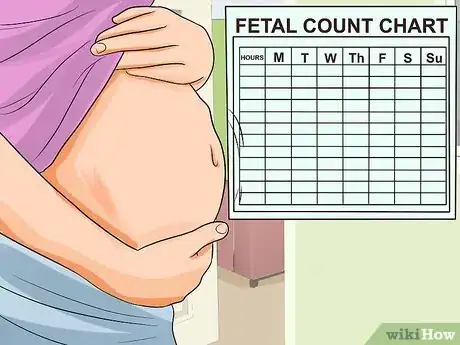
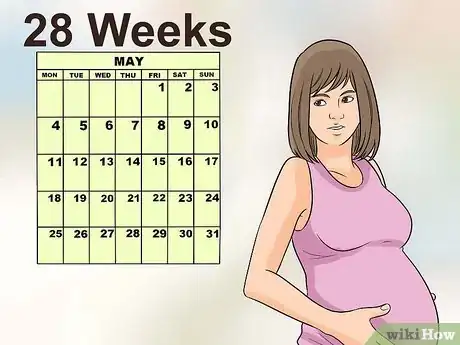
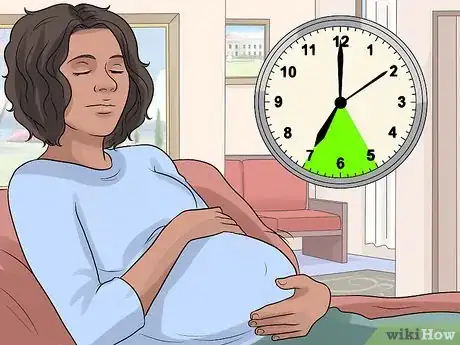
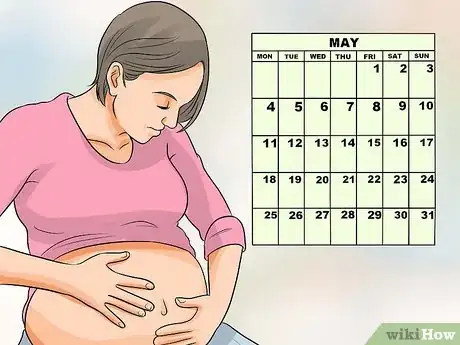
































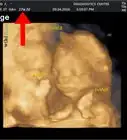







































Medical Disclaimer
The content of this article is not intended to be a substitute for professional medical advice, examination, diagnosis, or treatment. You should always contact your doctor or other qualified healthcare professional before starting, changing, or stopping any kind of health treatment.
Read More...